Regeneration: What the Axolotl Can Teach Us About Regrowing Human Limbs
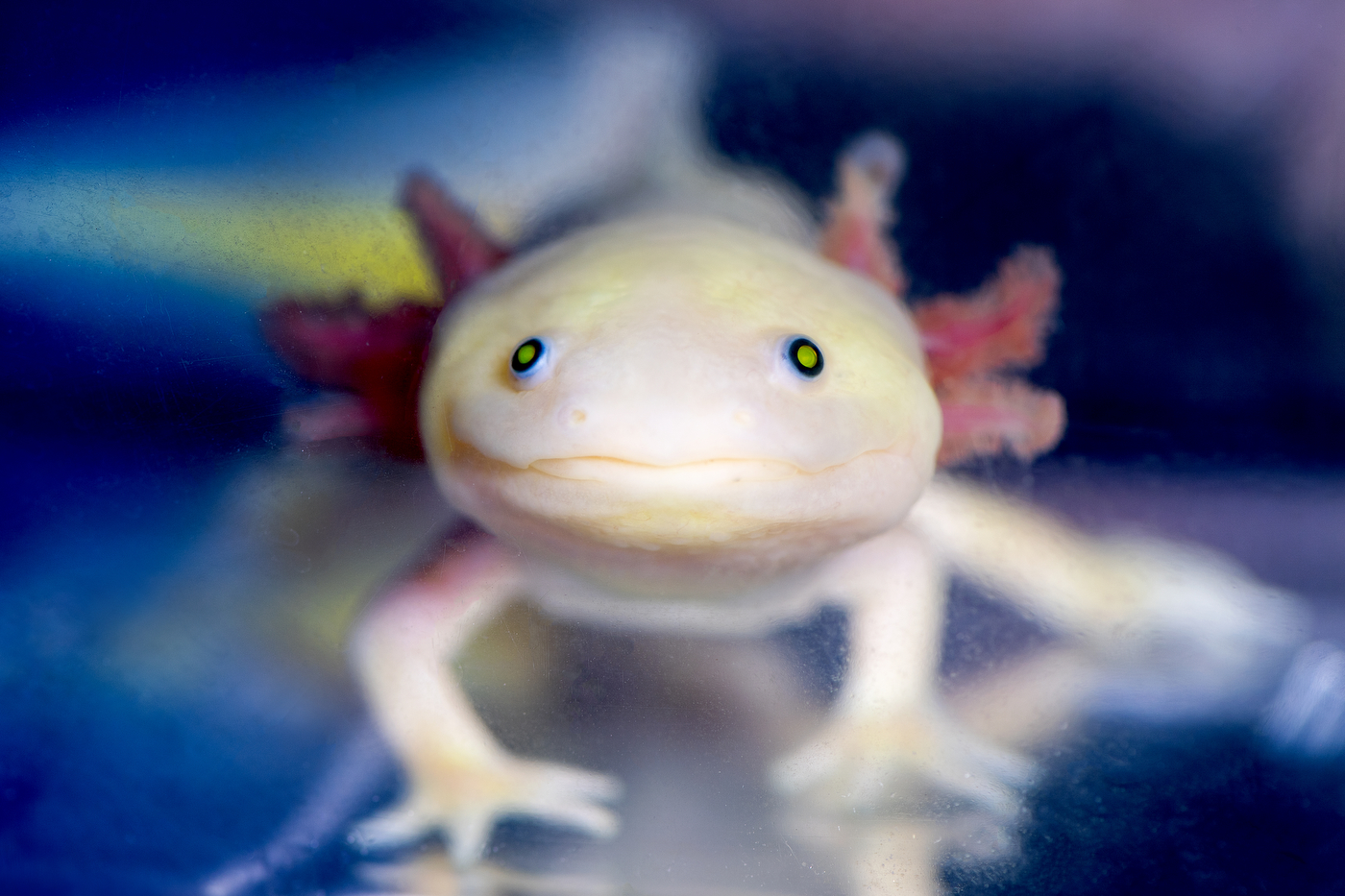
This salamander tin regenerate limbs like Deadpool. Can information technology teach us to practice the same?
The axolotl, an odd-looking salamander from Mexico, tin can regrow its limbs, organs, and fifty-fifty parts of its eyes flawlessly, and without scarring. Photo by Matthew Modoono/Northeastern University
If you stuck the caput of a toad on the trunk of a chubby eel, and added legs, a frilly mane, and the superpowers of Marvel's Deadpool, you might have something similar an axolotl.
This unusual-looking salamander from Mexico can regrow injured or lost body parts flawlessly, and without scarring. James Monaghan, an associate professor of biology at Northeastern, is trying to learn how axolotls do information technology, in the promise that we can someday trigger a similar process in humans.
"They plow back on genes that you and I turn off forever," says Monaghan, who has virtually 400 axolotls in his lab at Northeastern. "Nosotros have all the genes to brand a limb, we just don't know how to coordinate them. They do."
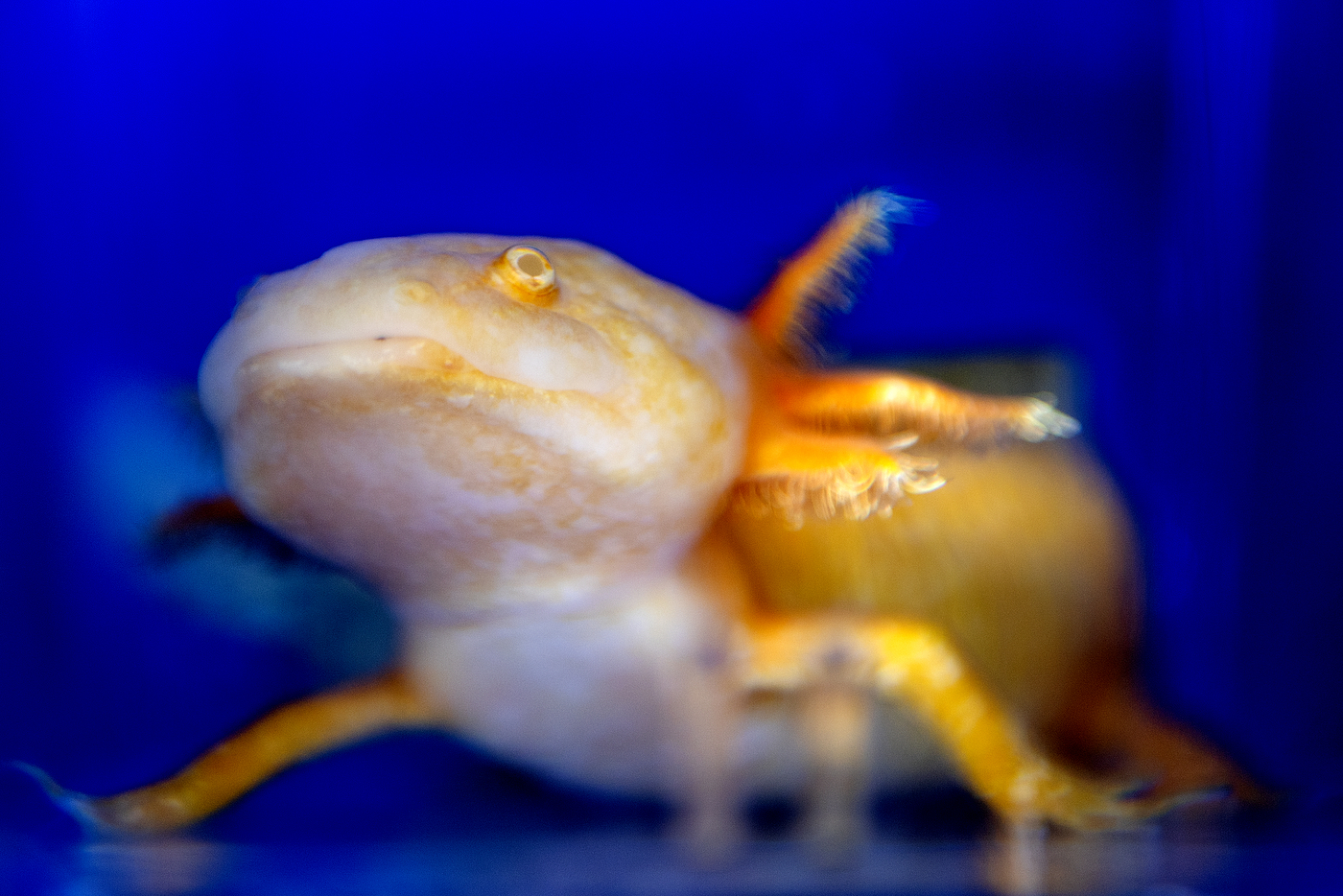
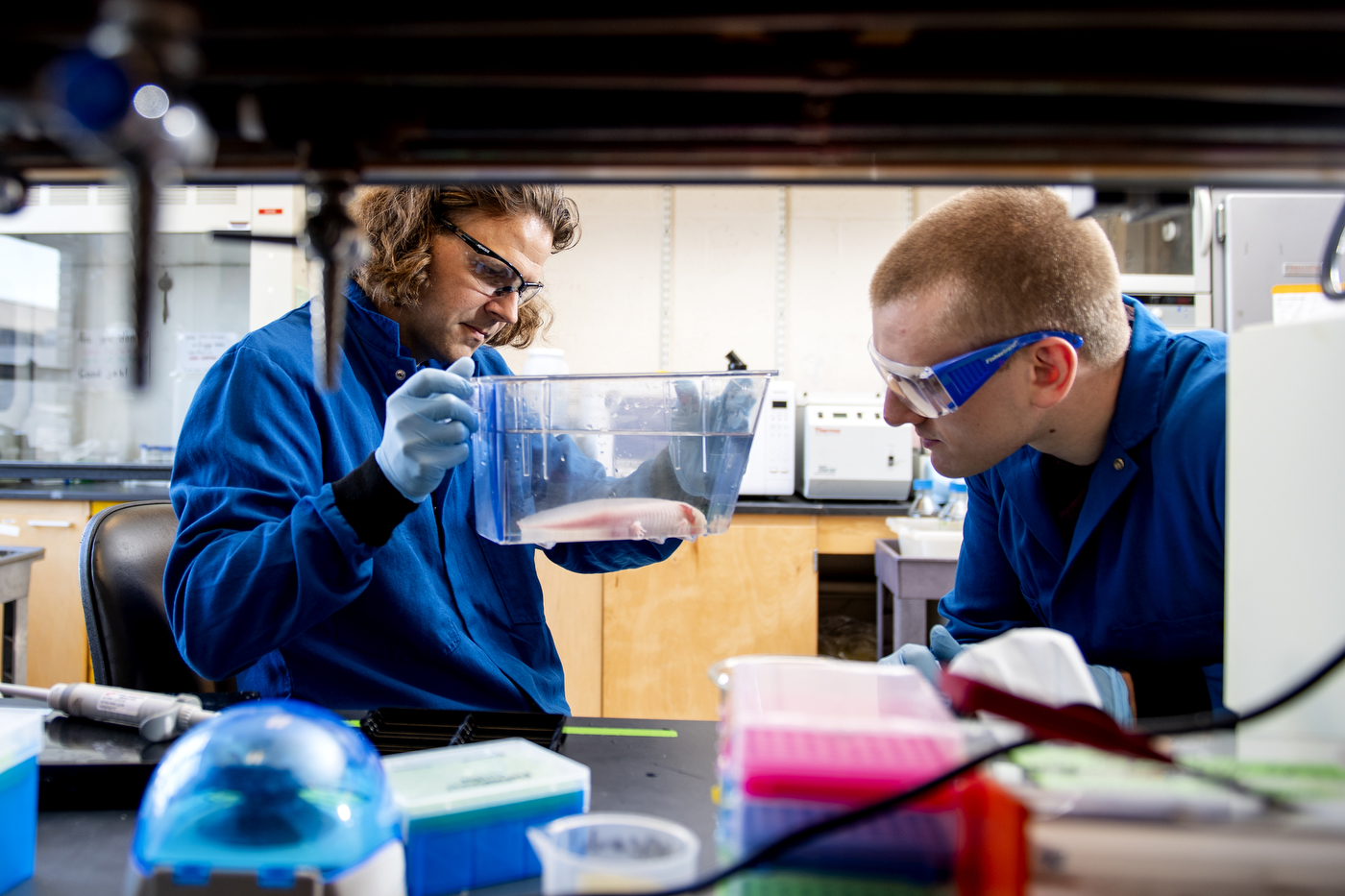
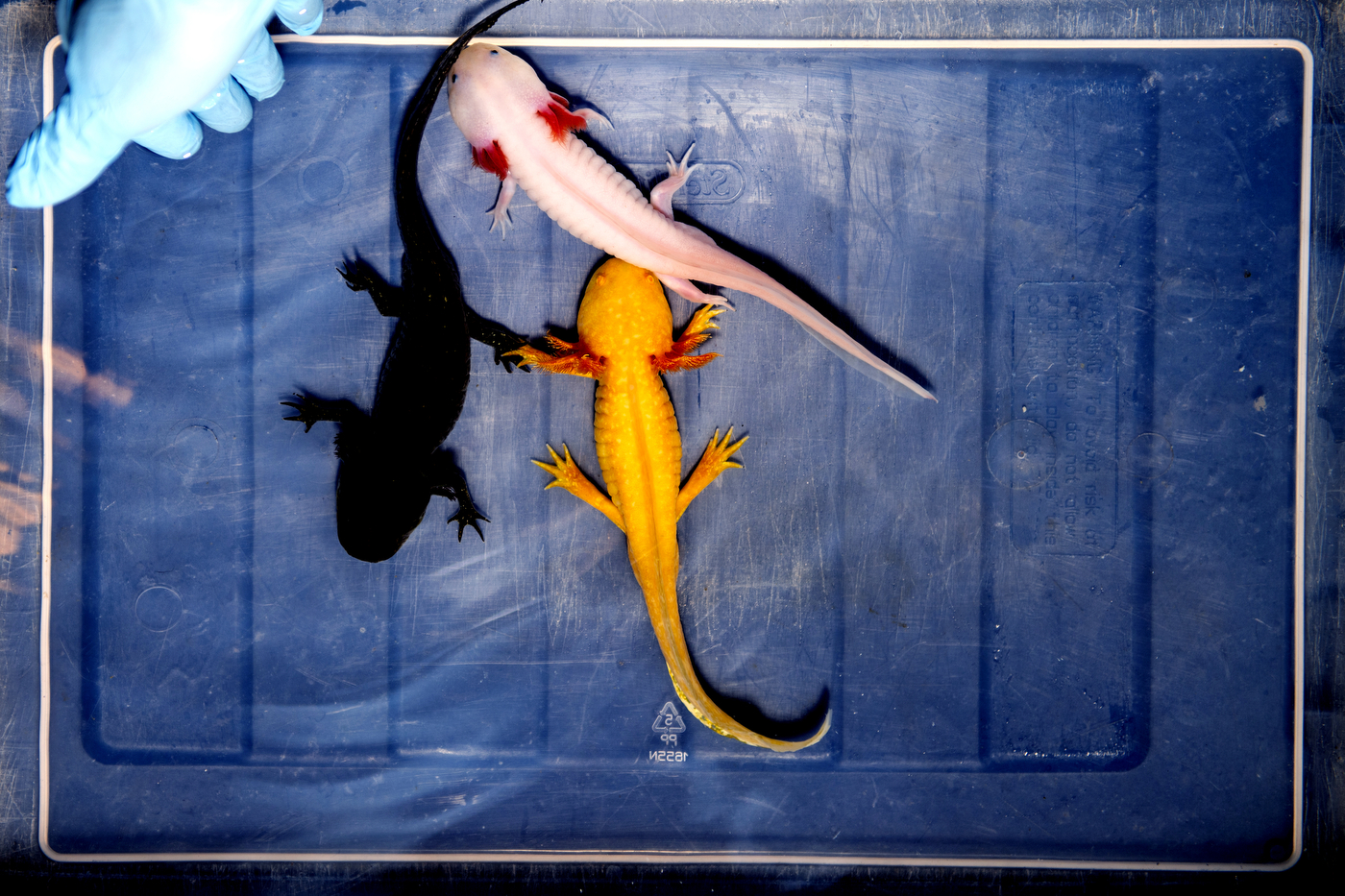
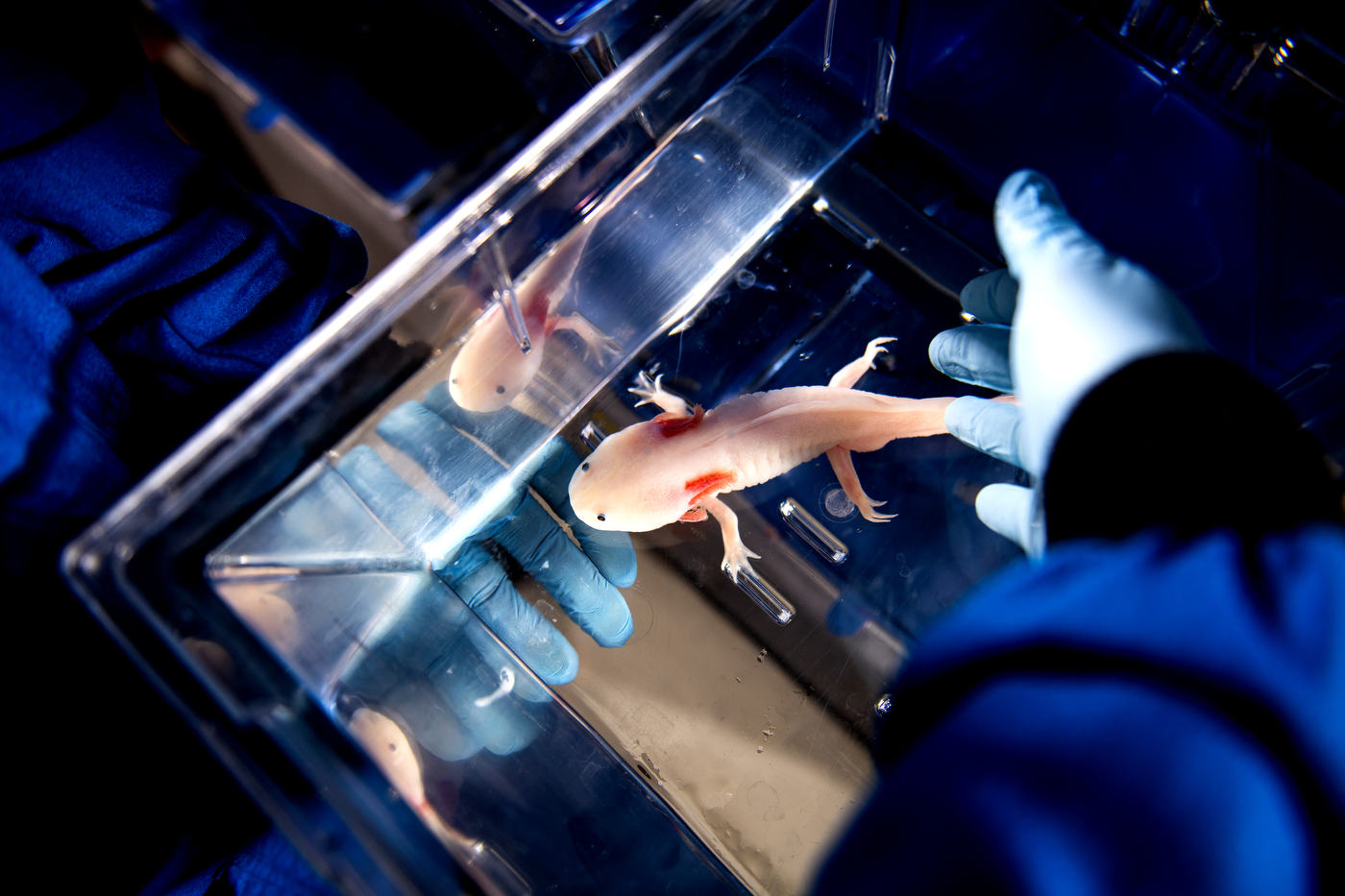
Every bit a human being fetus develops, cells separate and differentiate into specific types to form fretfulness, tissues, basic, and organs. Just for the almost part, these processes cease one time we're fully grown. Our bodies won't grow united states of america another arm if we lose i.
Axolotls and other salamanders are able to turn dorsum on these developmental processes when they become injured. The cells near the wound de-differentiate, reverting to types of cells that are closer to stem cells and capable of edifice new tissue. Equally this process is underway, hundreds of genes plow on and off in different cells. To exist able to translate this to humans, researchers need to identify exactly which genes trigger the changes.
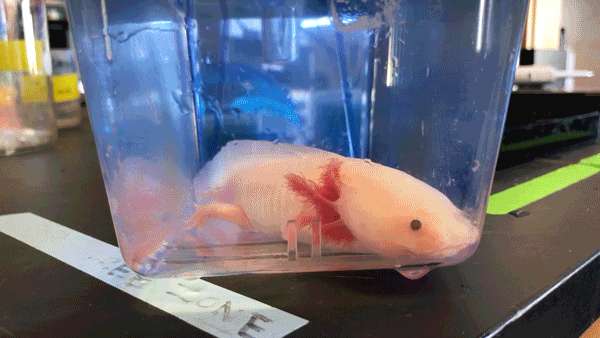
But the axolotl genome is more than 10 times the size of the human genome, which has fabricated it especially hard to analyze. It was finally sequenced terminal year , creating opportunities for new avenues of inquiry.
"Ten years ago, I would have said it's out of the question to even call up about regenerating a person'southward arm," Monaghan says. "Just the more we larn, the more viable it seems."
This week, salamander experts from effectually the earth are gathering at Northeastern to share knowledge and techniques that could bring us closer to imbuing humans with our own regenerative abilities. The briefing , which runs from Tuesday, July 23, to Thursday, July 25, volition characteristic talks on the mechanisms behind regrowing teeth, tails, eyes, and gills, merely it'south not just for scientists studying regeneration, Monaghan says.
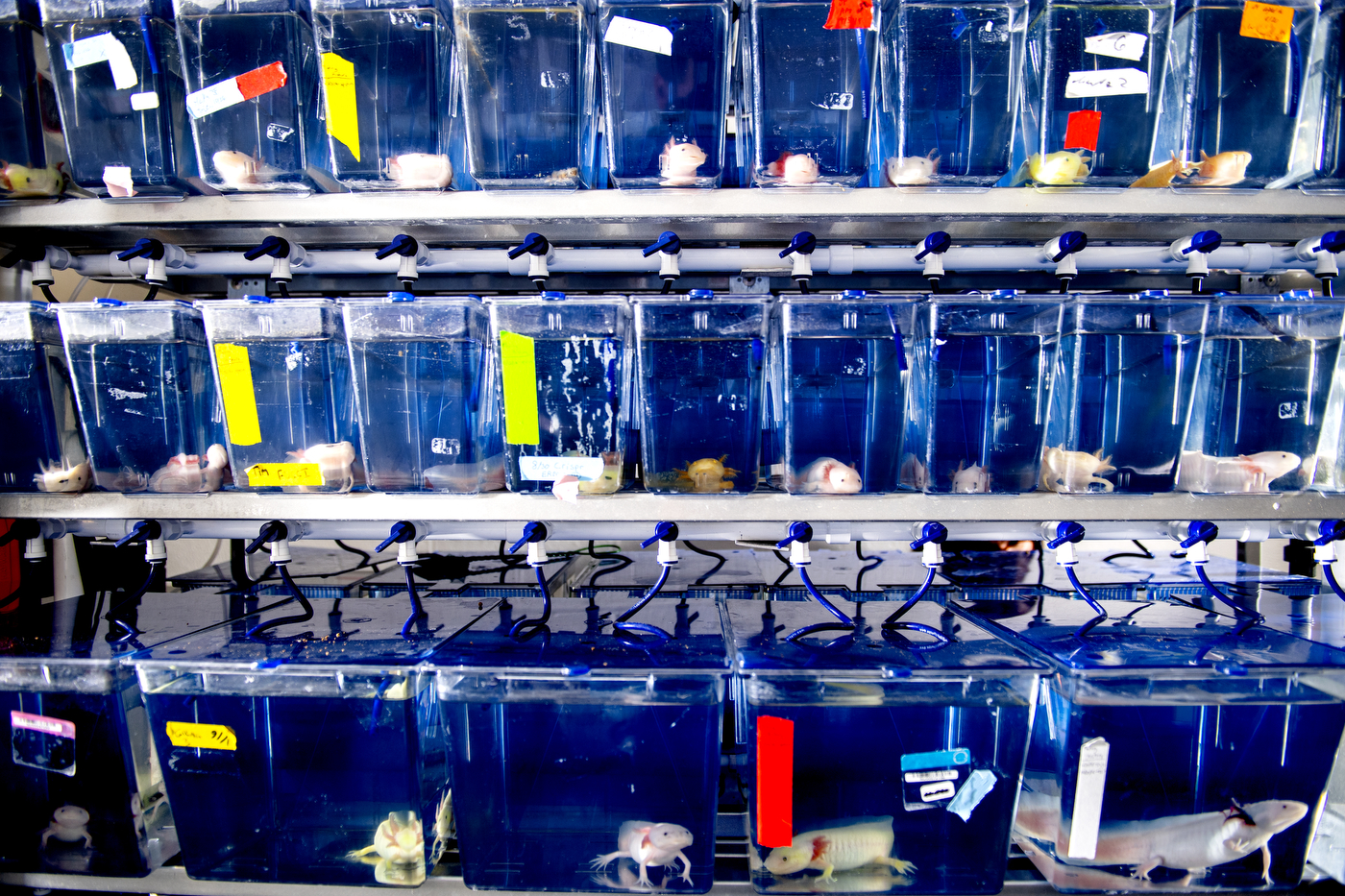
Although axolotls breed easily in the lab, their numbers have plummeted in the wild. They are found exclusively in Lake Xochimilco, the remnants of a big lake organisation that has been reduced to a series of canals in the southern function of United mexican states Urban center. Other species of salamanders are also losing their habitat, struggling to cope with invasive predators, and dying from a particularly nasty fungal infection .
Losing these populations means losing genetic diversity that could assistance researchers understand the incredible abilities of these animals. Monaghan says attendees will include researchers studying the ecology and conservation of salamanders, as well as their regenerative abilities.
"If you piece of work on salamanders, we want you at that place," Monaghan says.
For media inquiries , delight contact media@northeastern.edu .
Source: https://news.northeastern.edu/2019/07/22/heres-what-we-can-learn-from-a-salamander-that-can-regenerate-its-limbs/
0 Response to "Regeneration: What the Axolotl Can Teach Us About Regrowing Human Limbs"
Post a Comment